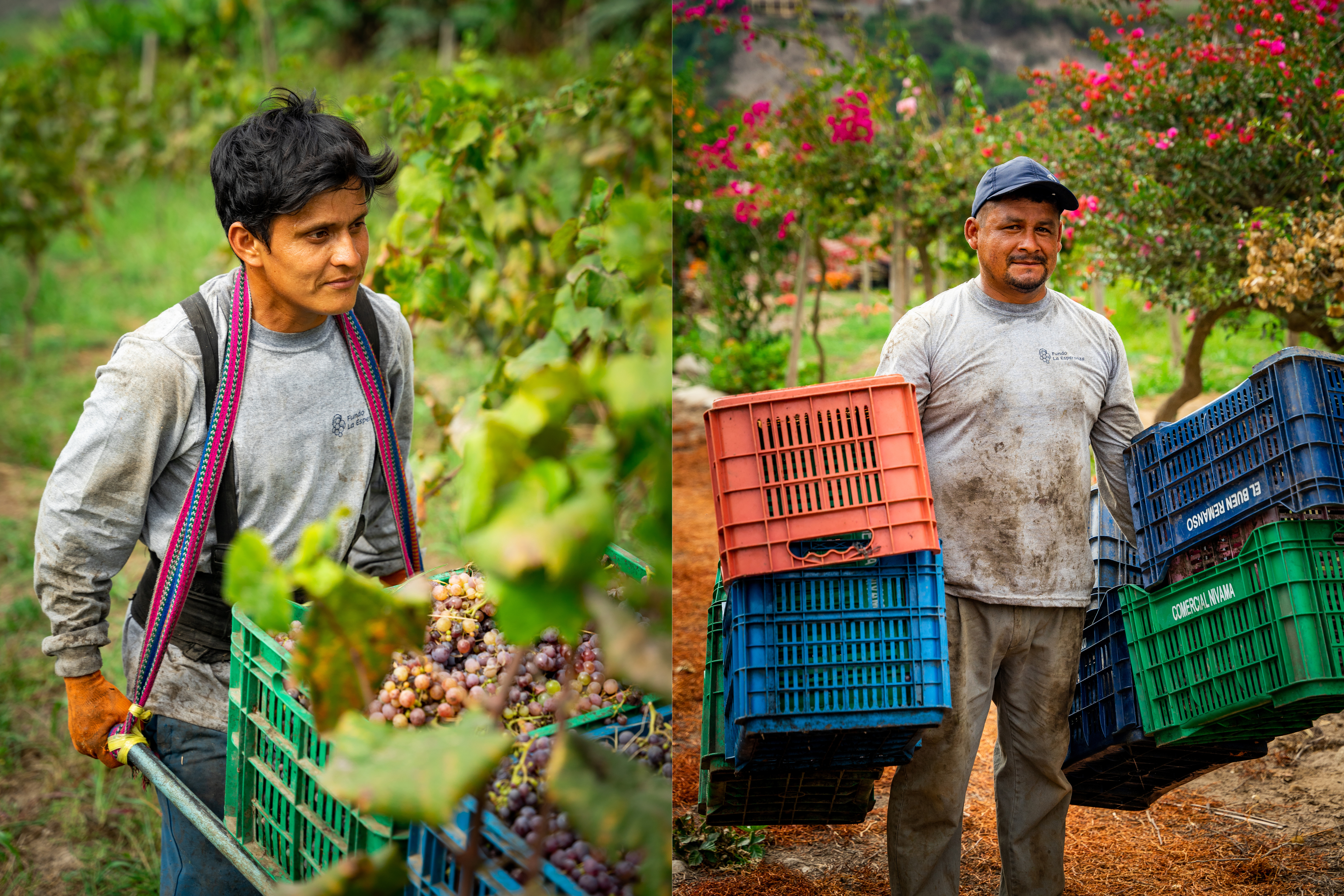NORTH STARS:
Production Consumption
Community Support
Heritage Value
“Pisco is deeply integrated into Peruvian culture yet as a category, it is often overlooked.”
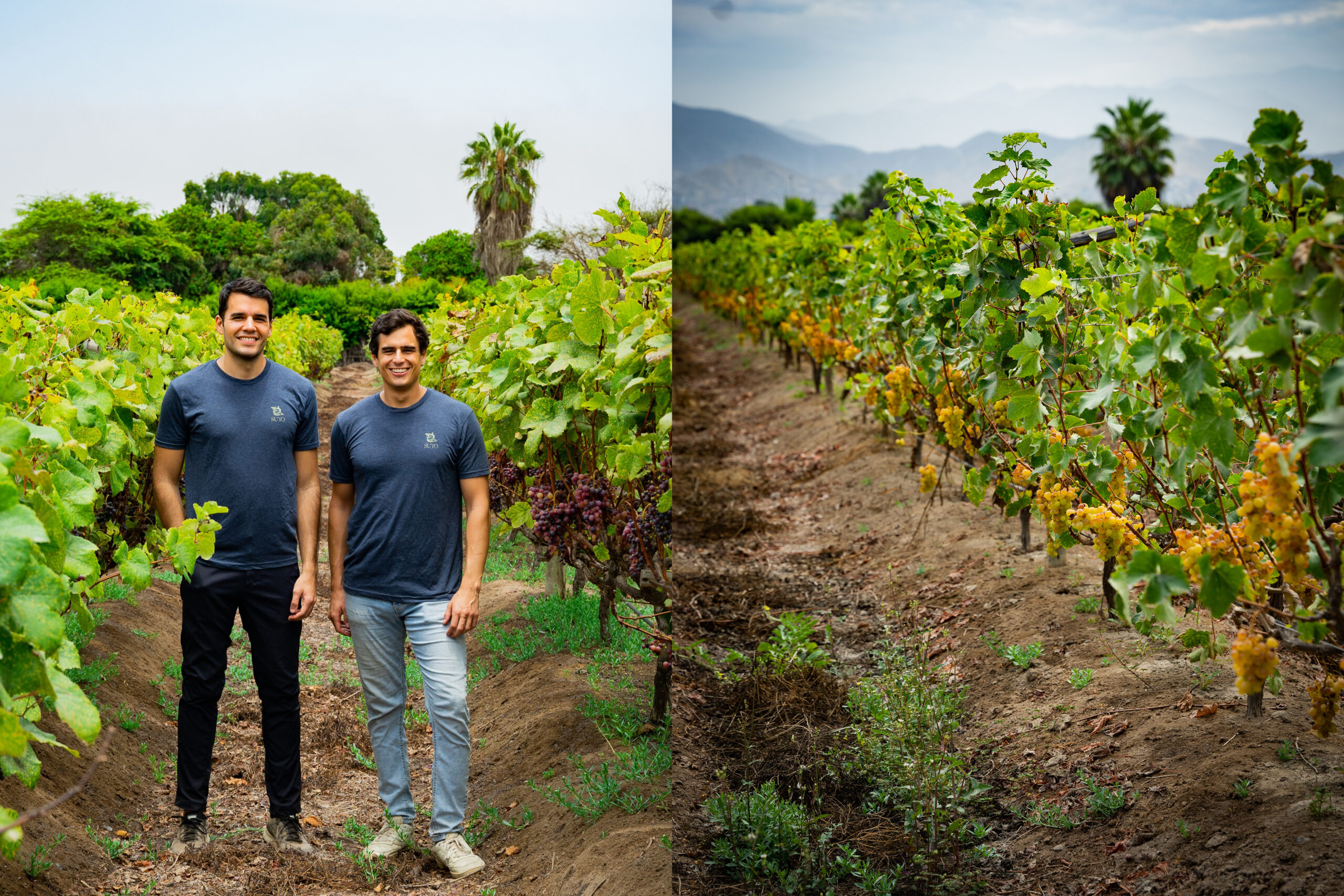
Alex and Ian Founders in the Fundo Puente Viejo vineyard. Courtesy of SUYO.
Most spirit enthusiasts understand that Cognac comes from distilled grapes grown exclusively in France. But how many know about its South American cousin?
“Ian’s in the vineyard today,” Alex says at the start of our call; a fitting image, I thought, picturing Ian kneeling in the dirt, closely inspecting vines. Yet, wine isn’t their endgame.
Alex Hildebrandt and Ian Leggett founded SUYO, a 100% Latino-owned beverage brand dedicated to introducing the world to pisco, a delicious but underappreciated grape-based spirit from Peru. By partnering exclusively with small, artisanal producers, SUYO brings traditionally crafted pisco to wider markets while preserving centuries-old techniques.
Since launching in 2021, the brand has collected numerous awards at international spirits competitions, proving that while the bottles themselves may tell a compelling story, consumer education remains key in the crowded artisanal spirits market.
What Is Pisco, Exactly?
Pisco is a clear, distilled grape spirit produced exclusively in Peru and Chile. Peru received its official Denomination of Origin (DO) for pisco in 1991, bringing with it strict regulations that keep the spirit uniquely authentic and, in many ways, inherently sustainable. “Pisco is the only spirit in the world legally required to contain just one ingredient,” Alex says. There are no additives, colorants, or flavors from aging — SUYO’s product is simply “one ingredient, from one place,” says Alex.
“We describe it as distilled natural wine,” he continues, “a description that resonates especially well with consumers who might normally hesitate to explore spirits.”
Pisco production follows three key rules.
First, it must come from grapes grown exclusively in five southern regions of Peru: Lima, Ica, Arequipa, Moquegua (including the Locumba area), and the Sama and Caplina valleys in Tacna.
Second, producers can use eight grape varieties: Quebranta, Negra Criolla, Uvina, Mollar, Italia, Torontel, Moscatel, and Albilla.
Finally, pisco must be distilled exactly once and aged at least three months in neutral containers — stainless steel, glass, plastic, or traditional clay vessels. Wood barrels are prohibited. Suyo rests theirs, however, for 18 months.
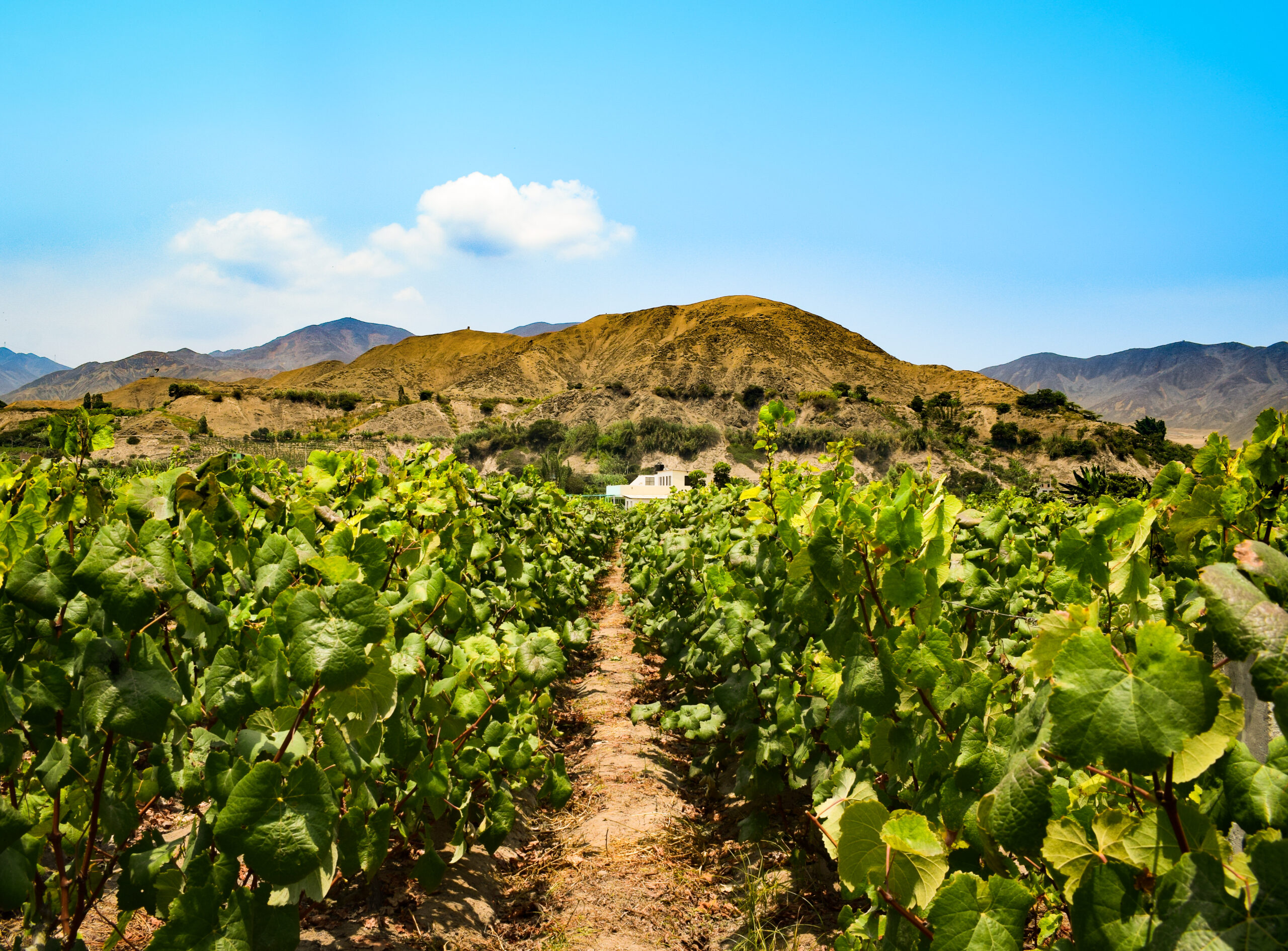
Fundo La Esperanza vineyard. Courtesy of SUYO.
Integrating Culture and Heritage Into the Product
Pisco is “deeply integrated into Peruvian culture and as a category, it is often overlooked,” says Alex. “So we found pisco to be a really excellent vehicle for us to celebrate Peruvian culture.”
Even the label reflects Peru’s heritage, cut to resemble a huaco, the traditional clay vessel historically used to transport pisco. The brand name SUYO comes from Quechua, the Indigenous language of Peru, and also translates as “yours” in Spanish — a tribute, as Alex explained, to the “independent producers who make everything possible, from the harvest of the grape to the distillation of pisco.”
But the strongest cultural connection comes through SUYO’s relationships with independent Peruvian producers.
Partnering with Peruvian Producers
From the start, Alex and Ian were determined to only work with small, family-owned producers. Today, SUYO serves as a platform for empowering artisanal pisco makers and as a route to the global marketplace. This bridge works two ways, Alex pointed out, “giving producers a platform to make themselves available on a global scale and allowing the consumer to explore the beauty of pisco, its depth and complexity, in a new way.”
Each bottle tells a story. The front label shares information about the vineyard behind each release, with additional details available on SUYO’s website and social media. For example, Fundo La Esperanza is produced by the Ponce de Leon family in Mala Valley. The back label provides deeper vineyard and terroir information. Crucially, revenue from each bottle is shared directly with the partner producer, allowing them to invest back into their vineyards.
Occasionally, the duo encounters unique, small lot expressions from other farmers, leading them to create the Exploratory Series. “While these releases are small in volume and revenue, it’s a critical storytelling piece for us. There are over 500 producers in Peru yet most of them are tiny and family-owned. They aren’t distilling as a primary source of income but rather because it’s fun and it’s a family tradition,” says Alex.
Soon, visitors to Peru won’t need to travel far to discover SUYO firsthand. Located in Mala Valley, about 90 minutes south of Lima, visitors can meet the team, stroll the vineyards, and taste the pisco paired with Peruvian food. “It isn’t exactly a tasting room yet,” Alex explains, “but we will be hosting tasting experiences.”
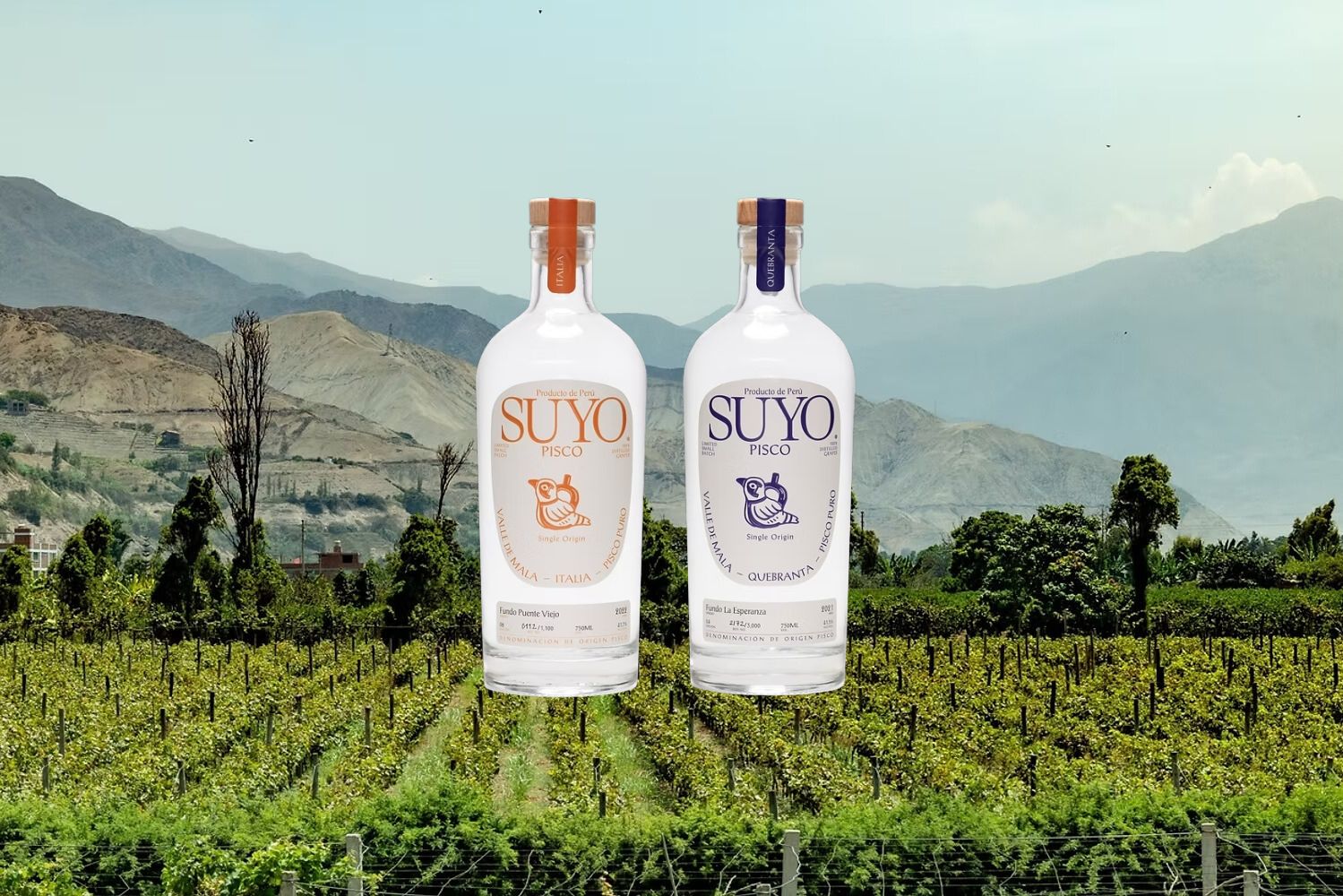
Pisco Punch and Chilcano. Courtesy of SUYO.
The Many Ways of Enjoying Pisco
SUYO’s two primary products are Quebranta and Italia (SRP $45). The Quebranta has more vegetal notes and a neutral flavor — an approachable choice for someone new to the spirit. Italia, by contrast, offers brighter aromatics and floral qualities. Both varieties are delicious on their own, ideally sipped neat, but they shine in cocktails like a classic Pisco Punch or a Chilcano, a traditional Peruvian cocktail:
Chilcano Recipe
- 1.75 oz SUYO Pisco Quebranta
- 0.25 oz fresh lime juice
- 5 oz ginger ale
- Garnish: fresh rosemary.
Instructions
- Pour the pisco and lime juice into a highball glass over ice.
- Add ginger ale.
- Stir gently to combine and garnish with fresh rosemary.
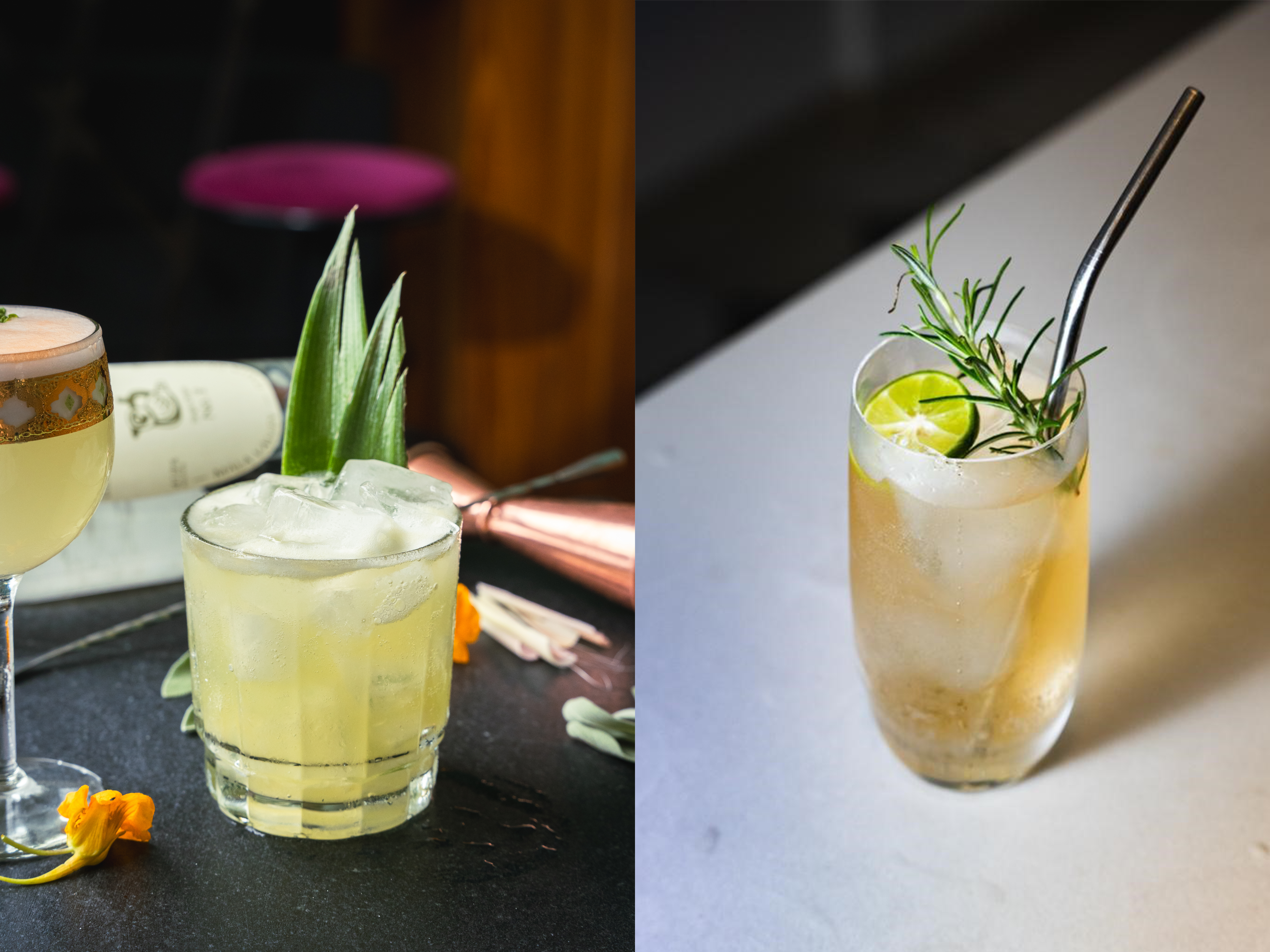
Pisco Punch and Chilcano. Courtesy of SUYO.
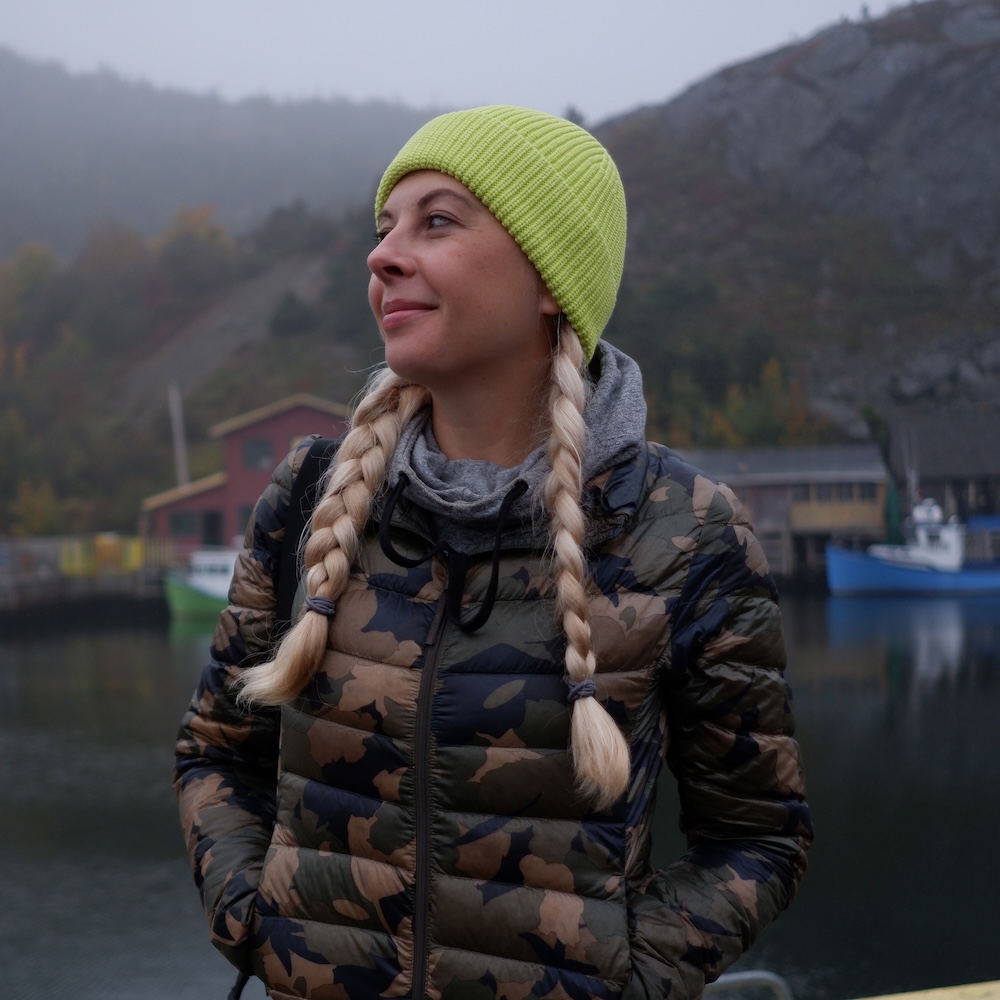
Kateryna is a Toronto-based freelance writer, photographer, and content creator. Her bylines appear in domestic and intentional print and digital publications while the more personal musings and travel itineraries live on pathstotravel.com. Kateryna aims to tell travel stories through visually engaging content focusing on explorative, mid-point to luxury travel, accommodations, food and beverage, and wellness. She is the chapter lead of Toronto Travel Massive, an International travel industry community-driven organization, and founder of a North American music magazine, QuipMag.com. Follow Kateryna on IG @katerryna.


